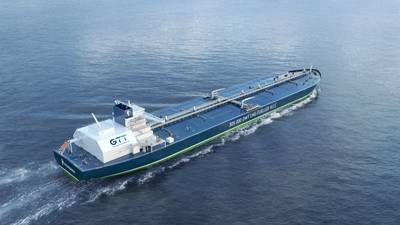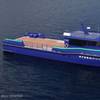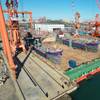LR Grants AIP for LNG Dual-fuel VLCC Design
GTT and Deltamarin have obtained an approval in principle (AIP) from Lloyd's Register for their design of a dual-fuel very large crude carrier (VLCC), which incorporates a 12,500m3 liquefied natural gas (LNG) tank equipped with GTT's Mark III Flex membrane technology.
The concept developed by GTT aims at maximizing vessel autonomy thanks to a large-capacity tank, giving shipowners and charterers the benefit of longer trade navigation with a single refueling operation, without any impact on cargo capacity.
Deltamarin and GTT explored various configurations and solutions to integrate this cutting-edge tank into the design. By leveraging advanced simulation tools and a holistic approach, the project not only delivers an LNG-powered vessel, but also sets new standards in energy efficiency and emissions reduction for VLCCs.
This innovative design fully complies with the environmental regulations set forth by the International Maritime Organization (IMO) until 2030. Compared to traditional oil-fueled tankers, this LNG-fueled VLCC design reduces CO2 emissions by at least 20%, while extending the operational range of vessels without compromising cargo capacity.
Philippe Berterottière, chairman and CEO of GTT, said, "Our LNG-fueled VLCC design is a step toward a greener maritime industry, reducing emissions and extending operational range while maintaining cargo capacity."
Kristian Knaapi, sales manager of Deltamarin, said, “Sustainability in the maritime industry is a driving force for Deltamarin, and this AIP for a LNG-fuelled VLCC design is a clear indication that we are on the right path towards decarbonisation. With our long-term partner GTT, we are constantly seeking new alternative designs and solutions to reduce emissions in shipping.”
Panos Mitrou, Lloyd’s Register global gas segment director, said, “The design allows for greater autonomy without affecting cargo capacity, making the vessel more flexible and resilient in a stretched and growing LNG bunkering supply chain. While the use of LNG as a fuel today helps to reduce greenhouse gas emissions from shipping, the possibility of using cleaner alternative blends or CO2 capture technologies will enable this VLCC concept to meet future environmental standards throughout its lifecycle.”














